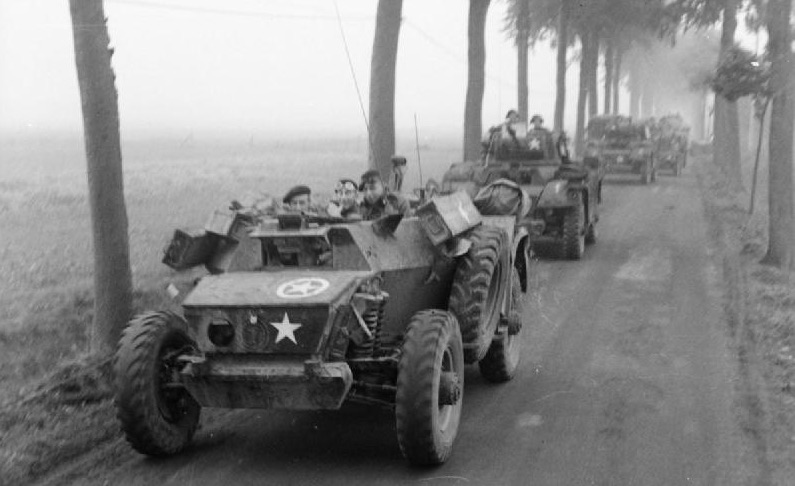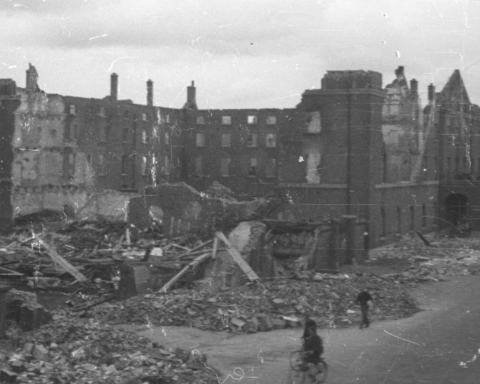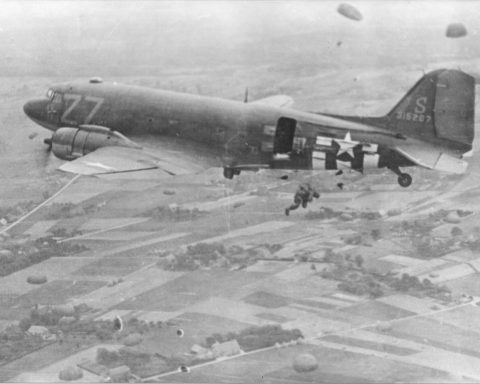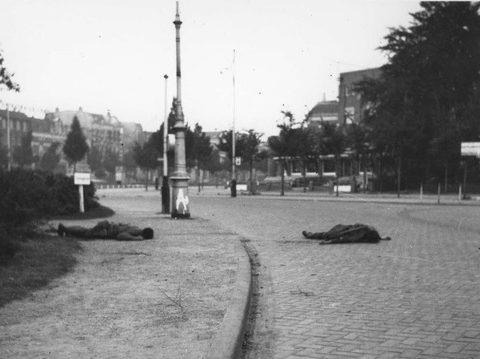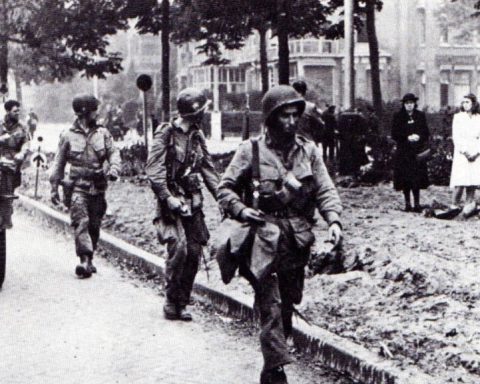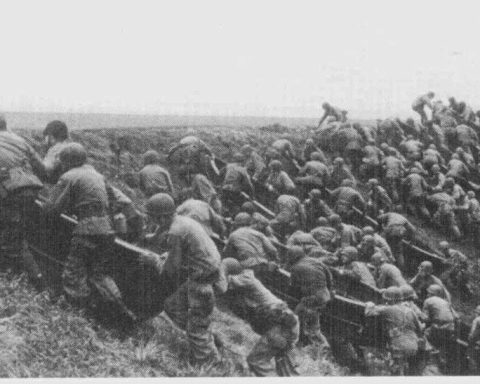Colonel Charles Mackenzie was General Urquhart’s chief of staff in Oosterbeek. Mackenzie had been sent south across the Rhine by Urquhart the day before to make clear to General Horrocks of XXX Corps and General Browning how dire the situation in Oosterbeek was.
The British commanders at Nijmegen seemed to have no idea of the major problems facing the 1st Airborne Division in Oosterbeek. On Friday, September 22, Mackenzie was able to relay the message to the chief of staff of XXX Corps via the radio of a British reconnaissance unit in Driel.
Mackenzie wanted to personally explain the situation of the British in Oosterbeek to General Boy Browning, who had his headquarters in Nijmegen. Browning was the boss of all British airborne troops and in that role ultimately responsible for the 1st British Airborne Division. Urquhart hoped that Browning could ensure that the British in Oosterbeek would be relieved as quickly as possible.
On Saturday, September 23, Colonel Mackenzie wanted to go from Driel to Nijmegen to speak to Browning. Mackenzie was told by the commander of the British troops in Driel that this would be difficult. There were still many German units between Driel and Nijmegen. He said it was too dangerous.
But the British reconnaissance unit that had first made contact with the Poles at Driel the day before intervened. He said it could be done.
“What we did yesterday, we should be able to do now. Only in the opposite direction.”
And so Mackenzie left a little later in a small convoy of four vehicles on the way to Nijmegen: a Scout Car with the section commander in front, followed by two armored cars and another Scout Car at the back.
Firefight
The British column encountered a destroyed German tank near Valburg that had been destroyed by British units the night before. The tank blocked the road and there was little space between the tank and the deep ditches on the side of the road.
While the lead Scout Car carefully maneuvered between the tank and the ditch, a German armored car suddenly appeared from behind a church less than a hundred meters away. The Scout Car hit full throttle and escaped at high speed.
The armored car in which Mackenzie was riding fired at the German vehicle. The German car returned fire and then disappeared behind some trees. A firefight like cat and mouse ensued between the British and the German armored car, with the cars constantly moving. Colonel Mackenzie later said that he had loaded the gun eighteen times.
At one point, Mackenzie’s armored car drove back to get the German car in sight again, but he drove a little too far. The armored car ended up in the ditch and fell upside down. The two rearmost cars from the British column had now left to get reinforcements in Driel.
Colonel Mackenzie and the two armored car crew took cover in a ditch that separated an orchard from a field of turnips. The three men crawled further back via the ditch to take shelter behind a wooden wall.
The crew members of the British armored car were unarmed. Only Mackenzie had his sten gun with him. In the meantime, a whole line of German soldiers walked side by side across the field of turnips in search of the British, while calling for them to surrender.
One of the Germans came within ten meters of the British. “Any closer and you have to shoot,” Mackenzie said to the man to whom he had given his Sten gun. But the German turned around at that moment. The Germans gave up the search.
A little later the sound of caterpillar tracks approached from Driel. The scout cars had returned along with a few tanks. The reinforcements from Driel had arrived. The tanks immediately fired at the church and when Mackenzie and the two other British emerged from behind the wooden wall, they were immediately attacked by machine gun fire from one of the tanks. Fortunately the volley was poorly aimed. Fortunately, the British tank gunner quickly realized his mistake.
Ocher yellow
, soaking wet and freezing, Mackenzie then continued his journey to Nijmegen and reached Browning’s Corps Headquarters. Browning, himself always impeccably dressed, later wrote that he was shocked by the sight of Mackenzie.
Lieutenant Colonel Mackenzie had not been able to shave for five days and, according to Browning, Mackenzie was yellow ocher and “covered with mud, like men who had been through the winter on the Somme.”
Browning listened carefully to what Colonel Mackenzie had to say about the major problems facing the remainder of the Airborne Division in Oosterbeek. But Mackenzie later said he didn’t feel like the message had gotten through. Mackenzie felt strongly that he had not been able to convince anyone during his mission of the state of emergency in the British perimeter in Oosterbeek.
The situation in Oosterbeek had only deteriorated further since Mackenzie’s departure. Almost all RAF supply flights fell into German hands, causing a major shortage of ammunition and especially medicine within the British perimeter. The situation in the nine dressing places and emergency hospitals in Oosterbeek was now virtually untenable.
Upon his return to Oosterbeek a day later, Colonel Mackenzie wondered what exactly he should tell Urquart.
Mackenzie: “I could either say what I thought, which was that after seeing the situation on both sides of the river I was convinced that a crossing from the south bank would not be successful. I could also tell him as I was instructed: XXX Corps was doing its best, there would be a crossing in the direction of Oosterbeek and we had to hold out.”
Mackenzie ultimately chose to convey both views to his commander.

